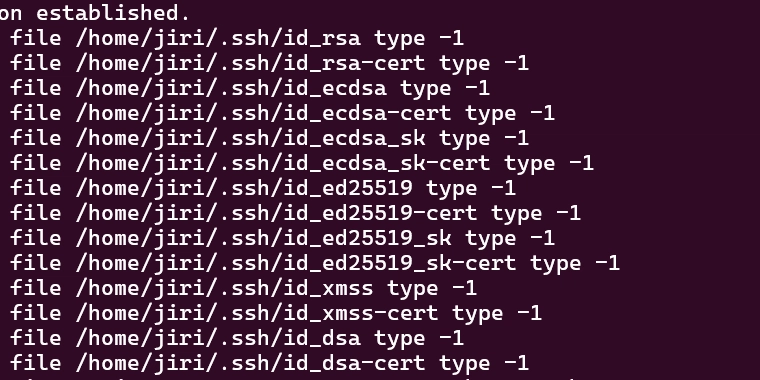Preferred approach to a matching process
I am currently in the process of putting together a matching algorithm. The matching process is as follows: Query data is used to perform a "lookup" on a set of reference data in order to determine an applicable id which is then later used in a sales order When the lookup data is queried, quite often more than one result is returned because the query data typically yields a broad number of matches (meaning there is more than one id to choose from to use in the sales order). In order to identify only one unique row, a series of rules are applied (using query data as the source) in order to narrow the results set, for example in the absence of value x then use value y, and so on Once the lookup query result has narrowed sufficiently so as to only identify a single unique row, the id is extracted and a sales order is created I am interested in hearing of different/preferred approaches to this problem. Currently, I approach this as follows: Call a simple data query to extract data from the "lookup" table on a "like for like" basis comparing values that are guaranteed to match to give an initial reduced results set With the resulting (disconnected) data set, I then apply a custom method to refine the result set further, continually narrowing a query until I find only one row If at any point I narrow in so much as to create a zero count result set, I undo the last applied query and "roll back" to the previous query In principal I am happy with this approach, but I am also aware that there may be potential performance impacts with large volumes of data. In an ideal world, I would have the up-front data query dependable enough that it returned only a single result, but I am also concerned that I don't want to over-bloat that layer with too much logic surrounding how the various "rules" should be applied. Can anyone suggest a different approach I should consider? Thanks in advance
I am currently in the process of putting together a matching algorithm. The matching process is as follows:
- Query data is used to perform a "lookup" on a set of reference data in order to determine an applicable id which is then later used in a sales order
- When the lookup data is queried, quite often more than one result is returned because the query data typically yields a broad number of matches (meaning there is more than one id to choose from to use in the sales order). In order to identify only one unique row, a series of rules are applied (using query data as the source) in order to narrow the results set, for example in the absence of value x then use value y, and so on
- Once the lookup query result has narrowed sufficiently so as to only identify a single unique row, the id is extracted and a sales order is created
I am interested in hearing of different/preferred approaches to this problem. Currently, I approach this as follows:
- Call a simple data query to extract data from the "lookup" table on a "like for like" basis comparing values that are guaranteed to match to give an initial reduced results set
- With the resulting (disconnected) data set, I then apply a custom method to refine the result set further, continually narrowing a query until I find only one row
- If at any point I narrow in so much as to create a zero count result set, I undo the last applied query and "roll back" to the previous query
In principal I am happy with this approach, but I am also aware that there may be potential performance impacts with large volumes of data. In an ideal world, I would have the up-front data query dependable enough that it returned only a single result, but I am also concerned that I don't want to over-bloat that layer with too much logic surrounding how the various "rules" should be applied.
Can anyone suggest a different approach I should consider?
Thanks in advance





































































































































































![[The AI Show Episode 145]: OpenAI Releases o3 and o4-mini, AI Is Causing “Quiet Layoffs,” Executive Order on Youth AI Education & GPT-4o’s Controversial Update](https://www.marketingaiinstitute.com/hubfs/ep%20145%20cover.png)




























































































































![[DEALS] Microsoft 365: 1-Year Subscription (Family/Up to 6 Users) (23% off) & Other Deals Up To 98% Off – Offers End Soon!](https://www.javacodegeeks.com/wp-content/uploads/2012/12/jcg-logo.jpg)




![From Art School Drop-out to Microsoft Engineer with Shashi Lo [Podcast #170]](https://cdn.hashnode.com/res/hashnode/image/upload/v1746203291209/439bf16b-c820-4fe8-b69e-94d80533b2df.png?#)








































































































(1).jpg?#)































_Inge_Johnsson-Alamy.jpg?width=1280&auto=webp&quality=80&disable=upscale#)
















































































































![Apple to Split iPhone Launches Across Fall and Spring in Major Shakeup [Report]](https://www.iclarified.com/images/news/97211/97211/97211-640.jpg)
![Apple to Move Camera to Top Left, Hide Face ID Under Display in iPhone 18 Pro Redesign [Report]](https://www.iclarified.com/images/news/97212/97212/97212-640.jpg)
![Apple Developing Battery Case for iPhone 17 Air Amid Battery Life Concerns [Report]](https://www.iclarified.com/images/news/97208/97208/97208-640.jpg)
![AirPods 4 On Sale for $99 [Lowest Price Ever]](https://www.iclarified.com/images/news/97206/97206/97206-640.jpg)
































![[Updated] Samsung’s 65-inch 4K Smart TV Just Crashed to $299 — That’s Cheaper Than an iPad](https://www.androidheadlines.com/wp-content/uploads/2025/05/samsung-du7200.jpg)




























































